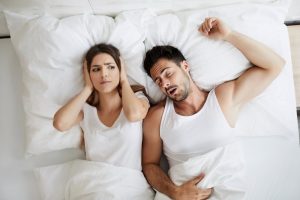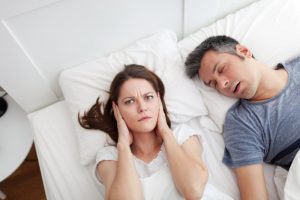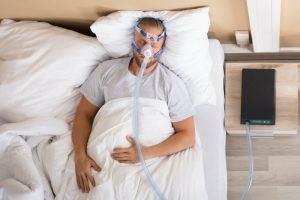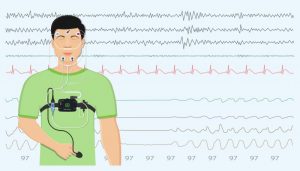Uncategorized
In great shape, but sleep apnea exists?
June 6, 2013

Q: I don’t get it, thought in order to have sleep apnea you had to be old, over weight and ugly, not in that order… I went to the Doc about restless leg syndrome and she said we need to do a sleep study and see just how bad you got it. Well I got it worst than I thought. I walked in to the waiting room at 8:45 pm and 5 other guys were sitting there cracking jokes about how their wife’s don’t put out any more and waiting to be escorted back to our rooms.
(more…)Surrounded By Snorers
May 30, 2013

Q: What is it with men and snoring??!! I don’t know many men who can honestly say that they don’t snore. My father-in-law did it; my dad does it. And, now, I am double-whammied, because I have not only one man in my house who snores but two!
(more…)CPAP Related Infections
May 23, 2013

Q: This morning I had a patient who uses a CPAP and also has problems with sinus infections. She asked me if I knew of any problems with the CPAP causing infections. I didn’t know and was wondering if you know.
Dr. Smith: Eye infections are common due to minor mask leaks, and sinus infections can get serious real quick. If there is rhinorrhea, this is a sign of trouble. Obesity and OSA can predispose someone to cerebrospinal fluid leak. OSA can cause an increase in intracranial pressure, and this is exacerbated with nasal CPAP. The cribiform plate is very thin, and this excess pressure can expose defects. Bottom line – make sure they are monitored very closely.
Periodic Limb Movements Without OSA
May 16, 2013
Q: I have a patient who has no sleep apnea and does not desaturate, but who has 60 periodic limb movements an hour. The sleep physician, a pulmonologist, referred him to an ENT for surgery to help the snoring, but said that since he wasn’t sleepy, we could ignore the limb movements for now. He did have about 30 arousals from limb movements each hour. What do you think of his advice?
Dr. Smith: PLMD often accompanies sleep disordered breathing. However, since his AHI and SpO2 are relatively normal, these movements do not appear to be related to his breathing at all. One movement every minute of the night is very excessive, and since he is also aroused out of normal sleep architecture every 2 minutes, I have to think this is affecting his sleep, even though he does not admit to sleepiness.
I have picked up early Parkinsons in a patient like this, so I am a bit sensitive to the issue, and would discuss a referral to rule this out if he was may patient. As the sleep MD is a pulmonologist, and not a neurologist, he would be less likely to make the connection. However, hopefully, I am just an alarmist, and the patient has little to worry about. Maybe you can make him an appliance for his snoring, then get him retested to see if the PLMD has improved.
The Importance of a Sleep Study
May 9, 2013

Every time I teach a seminar to dentists on treating snoring and sleep apnea, I get this question: “Dr. Smith, if I have a patient who comes in and says they want an appliance for their snoring, and that they know they don’t have sleep apnea, can’t I just make them a snore guard to help the snoring?”
It’s a legitimate question, and unless a doctor truly understands the field of sleep disorders, he or she could move down a path they should not have traveled. Allow me to explain.
(more…)“My husband snores, but I never see him stop breathing or gasp for air, so I’m sure he doesn’t have sleep apnea”
May 2, 2013
I’m afraid bed partners are ill-suited to be airway diagnosticians, regardless of their sincerity. There are reasons for this, of course, so allow me to explain.
First, audible gasps and breathing pauses are not the only manifestations of sleep apnea. In fact, there is a condition known as silent apnea, where snoring does not even exist.
Secondly, many bed partners (and I am not saying you do this) will nudge their partner when they are snoring, urging them to move to a side sleeping position where the snoring is not so irritating. This will also lessen the likelihood of apneic episodes, but as soon as the non-snoring partner goes to sleep, the snorer might roll onto their back and succumb to a collapsed airway caused by gravitational forces.
Finally, unless you are awake, watching him sleep all night long, there are many phases of sleep staging, and some are more prone to causing sleep disordered breathing. The most common would be REM sleep, as he is essentially paralyzed during vivid dream action (for obvious reasons). The majority of REM sleep occurs during the latter third of the night, so if you primarily watch or listen during the first hour or so, he is not likely to get into any REM sleep at all!
I hope this helps you understand why it is so important that your husband gets a sleep study, so that we can rule in or out the existence of sleep apnea. You could very well save his life by urging him to seek a diagnosis of his sleeping condition.
Childhood Sleep Apnea
April 19, 2013
Q: Just wondered what you know about sleep studies for kids. One of the children in my practice sounds like he has some nasal obstruction, but no snoring that the parents have detected, and he is not heavy. So I have my doubts about tonsils, but I have not examined him. Wonder if he is more like UARS? Do you know anything about CPAP for kids? Oh, and he also sleepwalks.
Dr. Smith: No experience at all with childhood epilepsy and OSA. However, yes, I treat children with OSA…had one in today with great parents who both come with him at appointments. Mom was going in to hold his jaw forward for at least an hour every night to get him at least SOME restful sleep. Sleep centers are very comfortable with studies on children. Sleep walking shows no neurological effects or predispositions, so no worries there.
Children do not have to snore at all to have OSA, and when they do, the palatine tonsils are rarely (about 2% of the time) the cause. MUCH more common to have adenoidal obstruction (about 38% of the time, if memory serves), so his nasal obstruction is likely the source. I would get him in to see about the adenoids, then get a sleep study if this does not appear to be the problem. They put CPAPs on small children, but I doubt he will need that.
Oral Appliances And Central Sleep Apnea (CSA)
April 12, 2013
Q: I was told that a mandibular advancement device will not help central sleep apnea. Is this true?
Dr. Dmith:
1. From Sleep and Breathing (When we remove obstructions and anatomically reorient the mandible, we can be surprised at the benefits)
The aim of the present study was to investigate the effect of a mandibular advancement device (MAD) for the treatment of sleep apnea (SA) on plasma brain natriuretic peptide (BNP), left ventricular ejection fraction (LVEF), and health-related qualify of life (HRQL) in patients with mild to moderate stable congestive heart failure (CHF). Seventeen male patients aged 68.4±5.5 with an apnea–hypopnea index (AHI) 10 were equipped with an individually fitted MAD. SA was evaluated using a portable respiratory multirecording system before and after the initiation of treatment. Eleven patients completed follow-up and were evaluated after 6 months of treatment. The AHI reduced from 25.4±10.3 to 16.5±10.0 (p=0.033) compared to baseline and mean plasma BNP levels decreased from 195.8±180.5 pg/ml to 148.1±139.9pg/ml (p=0.035). SA-related symptoms, e.g., excessive daytime sleepiness, were also reduced (p=0.003). LVEF and HRQL were unchanged. We conclude that SA treatment with a MAD on patients with mild to moderate stable CHF appears to result in the reduction of plasma BNP levels. Further studies to investigate if the observed reduction in BNP concentrations also result in improved prognosis are warranted.
2. From articles like this one, it becomes clear that a) Obstructions that create a decrease in respiratory motor output will b) decrease respiratory drive, leading to c) CSA. Therefore, anything that removes obstructions, such as a MAD, can improve CSA.
3. Additionally, OSA leads to arousals, which leads to hyperventilation, which leads to hypocapnia, which leads to a decreased respiratory drive, which leads to CSA. So, control OSA with a MAD, and you can lessen the likelihood of CSA manifestation.
Dental Appliances for Central Sleep Apnea
April 4, 2013
Q: Can a MAD improve CSA as opposed to OSA?
Dr. Smith: Yes, there is more and more literature coming out showing that not only can mandibular advancement devices improve obstructive sleep apnea, but they can have a positive effect on central sleep apnea as well.
From articles like this one, it becomes clear that a) Obstructions that create a decrease in respiratory motor output will b) decrease respiratory drive, leading to c) CSA. Therefore, anything that removes obstructions, such as a MAD, can improve CSA.
Additionally, OSA leads to arousals, which leads to hyperventilation, which leads to hypocapnia, which leads to a decreased respiratory drive, which leads to CSA. So, control OSA with a MAD, and you can lessen the likelihood of CSA manifestation.
Watch-PAT Numbers
March 28, 2013
Q: What does the RDI, AHI and ODI represent on the Watch-PAT report?
Dr. Smith: RDI stands for the respiratory disturbance index, which includes apneas, hypopneas and RERAs. If the RDI is high and the AHI is low, this indicates Upper Airway Resistance Syndrome, and most sleep centers will not report this on studies. Oral appliances are great for this condition.
AHI stands for the Apnea-Hypopnea Index, and contains apneas and hypopneas. Put simply, although not exactly correct, this is the number of times you stop breathing for at least 10 seconds each hour.
ODI is the desaturation index, and it means the number of times each hour your hemoglobin (storage facility and transporter of O2 in your blood) lets go of at least 4% of the O2 it contains. This is what you measure with your pulse oximeters you use when sedating patients.
